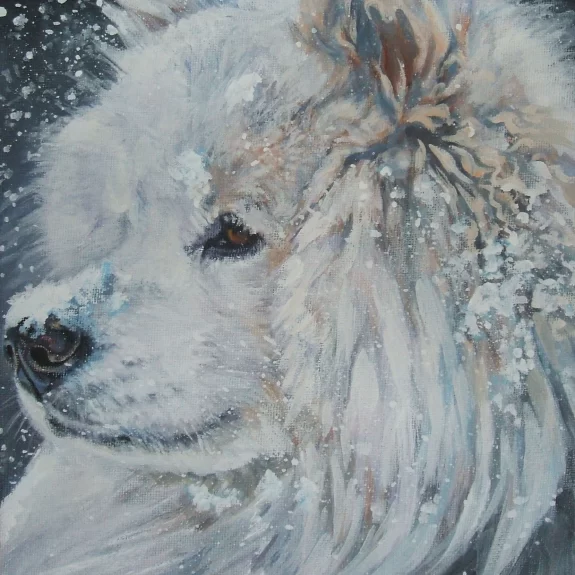
Most of the first Samoyeds that came to England (and the United States) at the end of the 19th century were descendants of veteran expedition sledge dogs brought out of Siberia to work on Arctic and Antarctic expeditions. Back in those days, the breed was known as the Bjelkier, or “white dog that breeds white.” While in Russian, the dogs were called Voinaika, which meant lead or direction dog or guard, the Brits used “Bjelkier.” Later, the breed would come to be called for the Samoyedic, or Samodeic people, a semi-nomadic culture from Asia that lived and worked with the breed.
When the breed was first exhibited at a dog show, it was at the Leeds Show in 1893, but the first mention of it may have come two years earlier when a newspaper advertisement appearing under the Foreign Dogs and Various classification was placed by Ernest Kilburn-Scott in 1891. As an aside, Kilburn-Scott was a member of the Royal Zoological Society, and one of the first importers of the breed. It was he who offered some of his dogs to be put on display as “reindeer herders,” and that is how they were publicized by English newspapers.
Getting back to the subject of breed names, not surprisingly, the Samoyed was exhibited in the Foreign Dogs class at the dog show, and labeled the Samozia Sledge Dog. Once again, Kilburn-Scott had something to say about this. His own choice of name for the breed was the Samoyede, and in the end, he prevailed. It helped that by 1909, Samoyede was the established name for the breed, largely because Kilburn-Scotts had founded the first Samoyede Club in England the same year. It wasn’t until 1923, however, that the English Kennel Club removed the “e” of the end of the name and it became the Samoyed. The AKC also dropped the “e,” but that happened nearly a quarter of a century later in 1947. Some say that dropping the “e” lead to the beginning of the modern mispronunciation of “Sahm-oid” instead of the native pronunciation of Sahm-uh-yed.
By any name, this breed has a gut wrenching period in its history when expeditions to the Arctic and Antarctic lead by names like Shackleton, Borchgrevink, Amundsen, Nansen, Abruzzi, Fiala, and Baldwin used Samoyed teams. The hardship these dogs endured is mind-numbing. The Samoyed Club of America is credited for having written that, “worn and exhausted” the dogs were killed “one by one to feed the others,” but the other dogs wouldn’t touch the meat, and in desperation, the starving humans ate it. The dogs worked to exhaustion, their feet bloody and torn. Our understanding is that today, most of the Samoyed lines in the UK and America are related to those expedition sledge dogs.
Image: Samoyed by LA Shepherd
www.facebook.com/L.A.ShepardArt
http://fineartamerica.com/profiles/lee-ann-shepard.html
www.etsy.com/shop/TheDogLover
